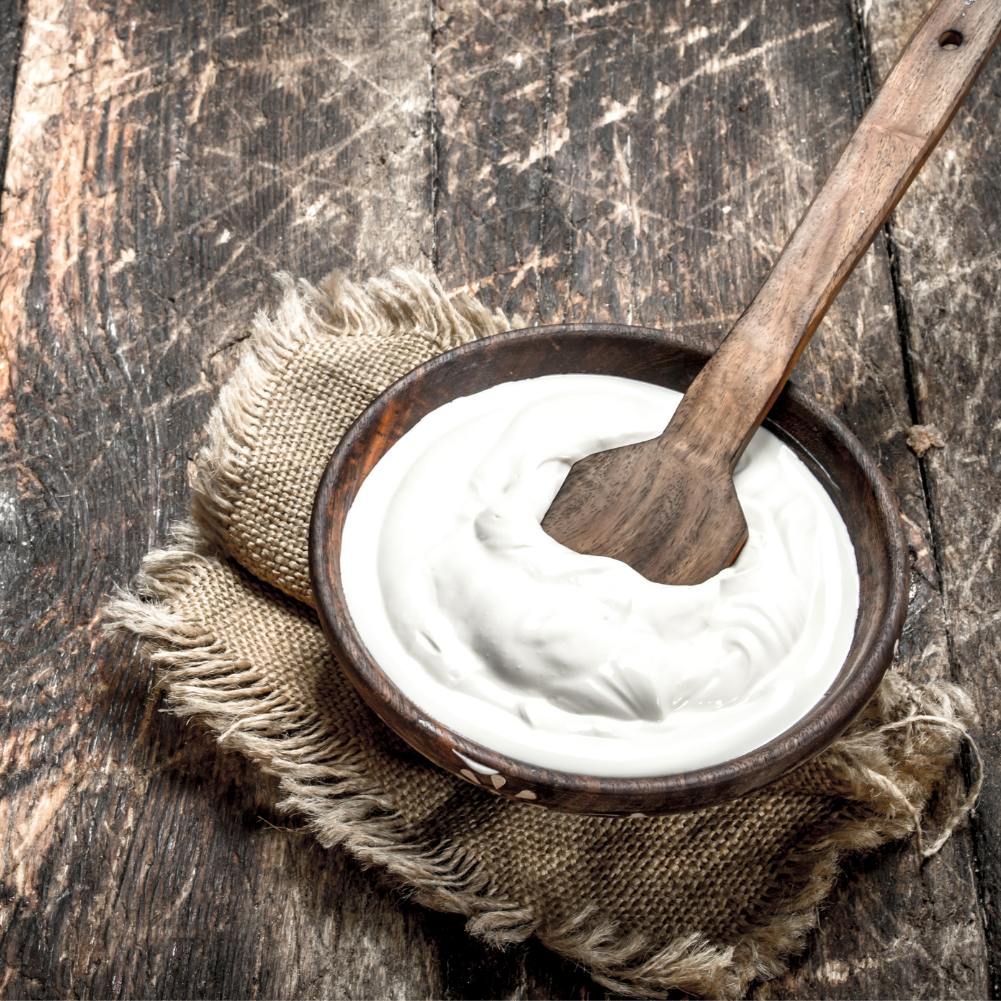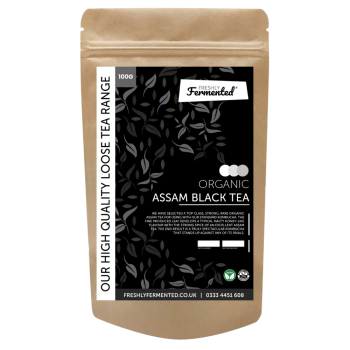Our organic cultured buttermilk starter produces a a tangy-flavoured thick milk product that can be enjoyed raw or used for baking. Lactococcus lactis and Lactobacillus bulgaricus are the bacteria responsible for fermenting milk into buttermilk.
Organic Cultured Buttermilk Starter
Discover the exceptional taste and health benefits of our Organic Cultured Buttermilk Starter. This starter creates a tangy-flavoured, thick milk product that’s not only delicious when enjoyed raw but also a versatile ingredient for baking. The magic behind our cultured buttermilk lies in the fermentation process driven by the beneficial bacteria Lactococcus lactis and Lactobacillus bulgaricus. Best of all, this process occurs at room temperature, eliminating the need for any additional equipment. Our cultured buttermilk offers a nutritious, fermented alternative to regular milk.
The Rich History of Cultured Buttermilk
Cultured buttermilk, commonly referred to simply as “buttermilk,” has a storied history. It was first commercially introduced in the United States in the 1920s, becoming particularly popular among immigrants who cherished it for its potential health benefits, including its reputed ability to slow ageing. Up until the 1960s, buttermilk was a staple in kitchens across the country. However, as yoghurt gained popularity, cultured buttermilk gradually declined in prevalence.
The Benefits of Cultured Buttermilk in Baking
Our Organic Cultured Buttermilk Starter is a must-have for bakers. It imparts a delightful tang to cakes, bread, biscuits, pancakes, and dressings. Buttermilk’s acidity not only enhances flavour but also contributes to a softer texture and better body in baked goods. This is because the acidic nature of buttermilk interacts with bicarbonate of soda, helping quick breads to rise beautifully.
Health Benefits Supported by Research
- Probiotic Powerhouse: The beneficial bacteria in cultured buttermilk, such as Lactococcus lactis and Lactobacillus bulgaricus, are known for their probiotic properties. Probiotics are linked to improved digestion and a strengthened immune system. Studies have shown that probiotics can help balance the gut microbiota, which is crucial for overall health (Sanders, M.E. et al., 2013).
- Rich in Nutrients: Cultured buttermilk is an excellent source of calcium, vitamin B12, and riboflavin, essential nutrients for maintaining strong bones, healthy red blood cells, and overall energy metabolism (El-Agamy, E.I., 2018).
- Potential Anti-Inflammatory Effects: Emerging research suggests that fermented dairy products, including cultured buttermilk, may possess anti-inflammatory properties. This can be particularly beneficial for individuals with inflammatory conditions (Bengmark, S., 2013).
Versatile and Easy to Use
Our Organic Cultured Buttermilk Starter is incredibly versatile. Whether you’re a seasoned baker or just starting, you can easily incorporate this starter into your recipes to create a variety of delectable dishes. Remember, while cultured buttermilk is excellent for baking, cooking at high temperatures will kill the beneficial bacteria. To retain its probiotic benefits, enjoy it raw in smoothies, salad dressings, or as a refreshing drink.
Join the Buttermilk Revival
Rediscover the joy and benefits of cultured buttermilk with our Organic Cultured Buttermilk Starter. Perfect for adding a tangy twist to your favourite recipes and boosting your digestive health, our buttermilk starter is a delightful addition to any kitchen. Embrace the tradition and health benefits of cultured buttermilk today.
References:
- Sanders, M.E., Merenstein, D.J., Reid, G., Gibson, G.R., & Rastall, R.A. (2013). Probiotics and prebiotics in intestinal health and disease: from biology to the clinic. Nature Reviews Gastroenterology & Hepatology, 10(11), 691-702.
- El-Agamy, E.I. (2018). Bioactive Components in Milk and Dairy Products. John Wiley & Sons.
- Bengmark, S. (2013). Gut microbiota, immune development and function. Pharmacological Research, 69(1), 87-113.
| Weight | 20 g |
|---|---|
| Ingredients | Organic Cultured Buttermilk Starter Culture – 1g freeze dried sachet. |
| Shelf Life | 1 year. |
| Storage | Keep at room temperature. |
| Allergens | Contains milk (from cows). |
I was using it as homemade more than fifty years ago and because of its pleasant taste and its nutritional value and anti aging properties I am going to produce it in our factory and launch it into the market
I used it for making cottage cheese. Nice flavour!
Worked very well.











